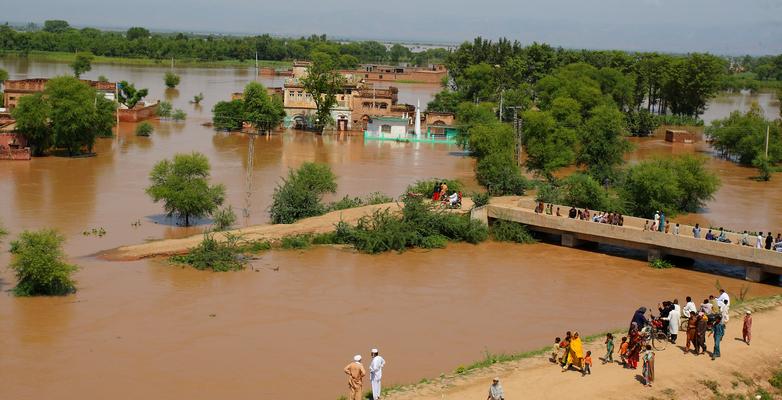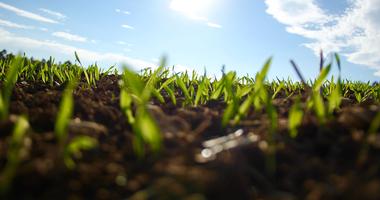
The World’s Poor Face the Brunt of the Climate Crisis
By Eman Nazir
I was 10 years old when the 2010 flooding hit Pakistan. I recall this disastrous national emergency as a time where I first witnessed how the most vulnerable people in our country- the majority of the population- bore the brunt of this natural disaster.
The 2022 floodings depicted a similar picture. Pakistan's worst-ever recorded floods underscored how the poor, not only in Pakistan but across the world, are often disproportionately exposed to the impacts of climate change.
Millions of people lacked adequate financial resources, safe housing, and any form of political power to protect themselves at a time when their villages were turning into islands, and when millions of acres of crops had been devastated. They were helpless and stranded; forced to stay in their flooded villages because they had nowhere and no one else to turn too.
While the poorest individuals in Pakistan faced the brunt of this climate disaster, the state of the developing country made the situation even more difficult to manage. According to the head of Pakistan’s national flood response center, Ahsan Iqbal, the government could not have acted any faster or have responded to such a crisis any better once it began to unfold. Iqbal added: “The scale of the calamity is so huge, it’s just beyond the administrative and financial resources of a country like Pakistan.”
A series of early evacuation warnings saved thousands of lives, however, for millions of people, such warnings alone were not sufficient.
A Global Crisis: Climate Injustice in Africa
Unfortunately, the climate injustice observed in Pakistan is just one example of how the poor are facing the brunt of climate change. A report issued by the World Meteorological Organization reveals the glaring reality of the state of climate in Africa. This report highlighted how rainfall patterns will continue to be unpredictable, glaciers will melt, and key water sources are shrinking. Accompanied by limited resources and rising water demand, the impacts this region will face will only continue to be more disastrous.
Extreme weather patterns and climate change in Africa are threatening human health and safety, socio-economic development, and food and water security. Africa accounts for about 2-3% of the world's greenhouse gas emissions, yet it continues to disproportionately suffer from its impacts.
The State of Climate in Africa report of 2021 demonstrated that such high water stress on these regions will impact approximately 250 million people, and displace over 700 million people by 2030.
“The worsening crisis and looming famine in the drought-stricken Horn of Africa shows how climate change can exacerbate water shocks, threatening the lives of hundreds of thousands of people and destabilizing communities, countries and entire regions,” according to WMO Secretary General Petteri Taalas.
A Global Crisis: Climate Injustice in Bangladesh
Bangladesh as a country contributes to a mere 0.4% of the world's total greenhouse gas emissions, yet it continues to endure severe and disproportionate climate risks.
The majority of Bangladesh sits upon the largest river delta in the world, at the junction of Ganges, Jamuna, and Meghna rivers. Despite these rivers being a key component of this nation's livelihood, rising sea levels will only continue to threaten that very livelihood.
Over two-thirds of Bangladesh sits below 15 feet above sea level. By 2050, one in seven people in Bangladesh are at the risk of being displaced by climate change. This past year, Bangladesh saw one of the most historically disastrous flash floods to hit its country; numerous towns were completely washed away and over 7.2 million people felt its impacts.
The effects of climate change will be felt the most by the poorest amongst the nation’s population. Average tropical cyclones cost Bangladesh over $1 billion per year; over 25% of the nation's agricultural GDP is at risk of being lost by 2050; and over 13 million people are threatened by the possibility of becoming internal climate migrants.
The Start of Real Progress at COP27?
The rise of climate injustice across the world's poorest countries has resulted in such nations repeatedly demanding a formal financial instrument- Loss and Damage- that quantifies damages to be paid by historically high emitters such as the United States and the European Union to developing countries facing the brunt of the climate crisis.
“Climate change is hitting us on multiple fronts,” said H.E. Aminath Shanua, minister of environment, climate change and technology, Republic of Maldives. “We need to accelerate action on loss and damage and accelerate funding.”
For the first time, “loss and damage” was officially brought to the agenda at COP 27 this year, despite its repeated resistance from the world's wealthiest nations. This event provided a platform to explore numerous creative financing options for loss and damage, as well as potential ways of moving forward. This landmark moment, therefore, introduced a conversation centered around “funding arrangements,” which was definitely a first on such an international platform.
A lot of work is still yet to be achieved; however, this moment was a sign of our global community moving in a more promising direction – toward real funding and addressing climate injustice




